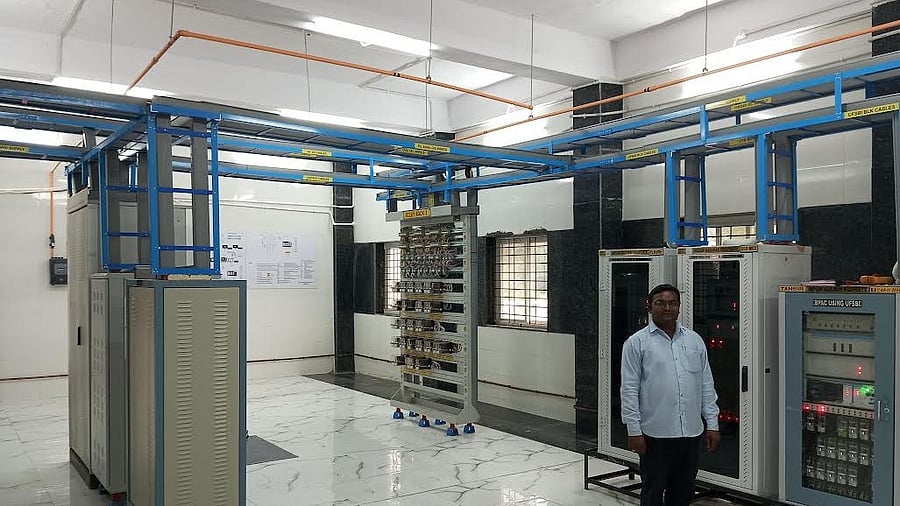
Indian Railways has successfully implemented most advanced Direct Drive Electronic Interlocking (DDEI) systems on pilot basis at Tajpur station in Madhya Pradesh
Credit: Railway Ministry
New Delhi: In order to improve the operational efficiency and safety, Indian Railways has successfully implemented most advanced Direct Drive Electronic Interlocking (DDEI) systems on pilot basis, at Tajpur station in Madhya Pradesh.
The DDEI system is an advancement over traditional interlocking systems used in railways.
Instead of relying on relays to transmit signals to points, tracks, and signals, the new system directly interfaces with these components, eliminating a potential point of failure, says railway officials.
By automating the interlocking process, the system minimizes the need for manual intervention, reducing the risk of human error in signaling operations.
With the implementation of this system, Western Railway has become the first zone of Indian Railways to adopt this system, a Japanese technology.
The commissioned in November 2024 at Tajpur station in Ratlam Division of Western Railways, so far has received no complaints of error in the system, says Senior Divisional Signalling and Telecom Engineer of Ratlam division R S Meena said.
Interlocking systems are crucial for preventing conflicting movements of trains and ensuring safe distances between them. With the Indian Railways' efforts to modernize its signalling and safety systems, including the replacement of mechanical signalling with Electrical/Electronic Interlocking (EI) systems, adoptation of DDEI system brings advanced safety features to further minimize human error and potential accidents.
This system offer increased efficiency due to reduced power losses and simpler designs with fewer moving parts. This could lead to faster train movements and smoother operations at thaccidents, he said.
Meena also said that the new system is also designed to be compatible with the Indian Railways' Kavach train protection system, allowing for seamless integration in the future.
While Tajpur is the first station to receive this technology, it's part of a broader initiative to modernize signaling systems across the railway network, said a statement from the railways.
Direct drive eliminates or significantly reduces the need for the extensive wiring and relays found in older systems. This simplifies installation, reduces maintenance, and minimizes the chances of human error associated with manual wiring or relay checks, said another official from the railway.
The use of direct drive systems in conjunction with electronic interlocking contributes to:Enhanced Safety: By removing manual operations and physical components prone to wear and tear, direct drive minimizes human error and potential failures, said the official.
The DDEI is reducing the Balasore rail mishap like situation by minimising the human error in train operation, said the official.
Balasore train accident which claimed about 300 lives, is believed to have been caused by human error leading to signal fault.
With the use of Optical Fiber Cables (OFC) in Direct Drive EI, the requirement of traditional copper cables is reduced by 60–70 per cent, offering better protection against lightning and electrical surges, said the railway.
The number of relays required is also reduced by about 70 per cent, leading to lower maintenance costs and easier fault detection, the statement said.
